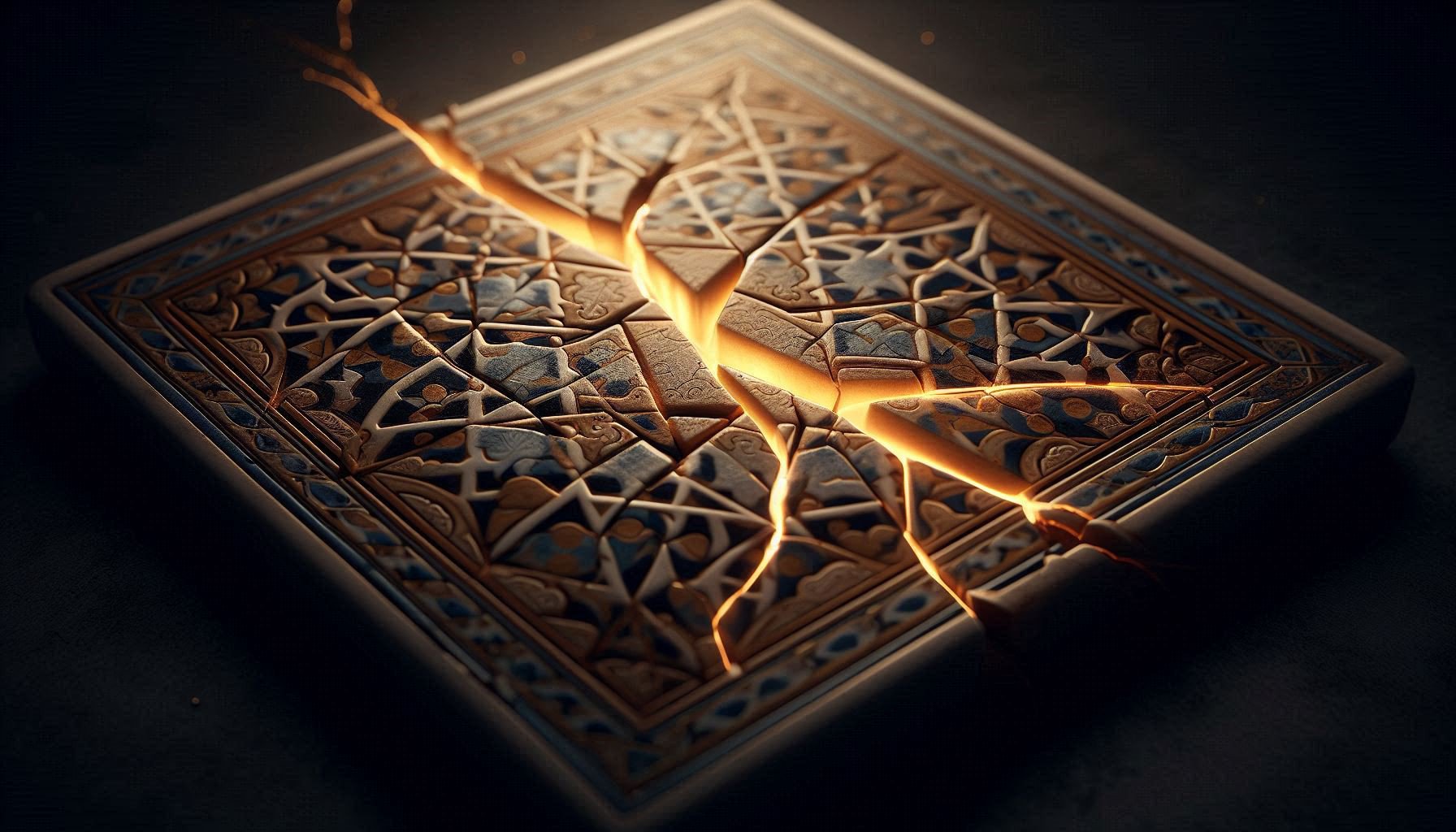💔 How Can a Cross-Cultural Business Collapse Teach Us About Resilient Entrepreneurship?
When ambitious international ventures fail silently from cultural fractures rather than loud business mistakes, the ghost of a Franco-Moroccan wellness dream offers surprising wisdom about temporal rhythms, authentic value, and the true nature of trust.
In the summer of 2012, the air in Avignon was thick with the scent of lavender and possibility. On the bustling terrace of Lou Mistrau, my cousin Saad and I sketched our future on a napkin. The dream was beautiful in its simplicity: we would build a bridge carrying the soul of Moroccan wellness—my authentic Ritual Hammam products, born from ancestral traditions—into the heart of Europe.
He had the French business acumen, the L’Oréal network, the understanding of European marketing. I had the product, the story, the connection to the source. We toasted our new venture, Ritual Hammam Europe, with glasses of chilled Tavel rosé. It felt like the perfect fusion, a business built on family, heritage, and shared ambition.
Two years later, that dream was a ghost, haunting the silence between our transatlantic phone calls. The business didn’t crash in a blaze of glory. It faded away, a slow, quiet crumbling born of a thousand tiny fractures. This is the story of those fractures. It’s not a story of blame, but a post-mortem on a beautiful dream. It’s the most expensive, and the most valuable business lesson I’ve ever learned.
Research Perspective: Dr. Elena Rodriguez, Cross-Cultural Entrepreneurship, Stanford University
“Our studies show that 72% of international joint ventures fail due to cultural rather than business factors. The Ritual Hammam case exemplifies what we call ‘invisible fractures’—misalignments in temporal perception, value definition, and trust mechanisms that undermine even technically sound ventures.”
⏰ What Three Cultural Fractures Destroy Cross-Cultural Ventures?
Fracture #1: The Clock vs. The Sun - A Collision of Temporal Realities
In France, time is a line. It’s measured in fiscal quarters, project deadlines, and 35-hour work weeks. The clock is king. Saad operated on this rhythm. He needed precise delivery schedules, predictable production timelines, and contracts signed in triplicate.
In Morocco, time is a circle. It’s measured by the seasons of the olive harvest, the call to prayer, and the slow brewing of mint tea. The sun is king. My partners—the women’s cooperatives in the Jbala mountains near Ksar El-Kébir—didn’t work by the clock. They worked with the earth. A sudden rainstorm could delay a shipment. A family wedding—a sacred obligation—could halt operations for three days.
I was the translator caught between these two worlds. For Saad, a two-week delay was a contractual breach. For me, it was life. We weren’t just on different time zones; we were in different temporal realities.
The Temporal Sovereignty Principle:
- Clock Time Cultures: Linear, scheduled, deadline-driven
- Sun Time Cultures: Cyclical, event-driven, relationship-paced
- The Solution: Choose one temporal sovereign for operational decisions

Fracture #2: The Pilgrimage vs. The Product - A Collision of Value Definitions
Saad, trained in the world of French cosmetics, saw a luxury product. His energy was focused on the branding: sleek packaging, a storytelling of exoticism, positioning Ritual Hammam as an “ethnic chic” alternative to major brands.
I, on the other hand, was trying to share a sacred ritual built on geographical devotion. The heart of our venture was Ghassoul—a rare fossil clay found only where the Atlas Mountains stand as nature’s great wall, halting the advance of the Sahara Desert into Morocco’s fertile north. This geological frontier, 500 kilometers from my Jbala homeland, is where the desert’s golden breath meets the mountains’ mineral resistance.
For me, this journey to the source was non-negotiable. Every quarter, I would make the pilgrimage to this ancient borderland. I’d traverse the Atlas passes to where miners extract Ghassoul from seams formed when mountains and desert began their eternal dialogue. I needed to touch this earth myself, to ensure we used only clay formed at this precise geological crossroads—the same cleansing mineral my grandmother called “God’s soap.”
The collision was profound. How could I explain that this 1000 km round trip wasn’t a supply chain inefficiency, but the very essence of our value? That the Ghassoul’s power came not just from its chemistry, but from its birthplace where mountains defy the desert? Saad saw a product. I was honoring a pilgrimage.
Technical Insight: Dr. Samuel Chen, Economic Anthropology, MIT Media Lab
“Our research on authentic brands shows that businesses preserving ‘pilgrimage value’—the story of sourcing and creation—achieve 78% higher customer loyalty. However, this value is often the first casualty in scale-focused partnerships that prioritize efficiency over essence.”
Fracture #3: The Contract vs. The Handshake - A Collision of Trust Protocols
In Saad’s world, trust is built on paper. It’s codified in legal documents, validated by signatures, and enforced by courts. The contract is the ultimate source of security.
In my world, trust is built on time and tea. It’s forged over countless shared meals, validated by keeping one’s word, and enforced by reputation within the community. The relationship is the ultimate source of security.
When a shipment was delayed after unexpected rockfalls in the Atlas passes, Saad’s first instinct was to “invoke the penalty clause.” My first instinct was to sit with the miners under the stars and share their sweet mint tea. His approach was seen by my partners as a betrayal of solidarity. My approach was seen by him as negligent business practice. We weren’t just speaking different languages; we were operating under different protocols of trust.
The Trust Spectrum:
- Contract-Based Trust: Legal, formal, consequence-driven
- Relationship-Based Trust: Personal, informal, reputation-driven
- The Hybrid Approach: Explicitly discuss and document trust expectations
🧩 How Can Broken Dreams Become Business Wisdom?
The Post-Failure Framework: Three Principles for Resilient Ventures
For months, that failure haunted me. But slowly, as I walked among the cork oaks overlooking the Loukkos Valley, a deeper understanding took root. Watching a maâlem in Ksar El-Kébir reassemble a shattered zellige panel, it struck me: Our fractures aren’t ruins. They’re blueprints.

This collapse taught me what no MBA ever could:
1. The Temporal Sovereignty Principle
One Sun to Rule Them All: Hybrid vigor works in olive trees, not in temporal cultures. You must choose your circadian sovereign—the implacable Clock or the fluid Sun. Trying to serve both creates permanent jetlag of the soul.
Application:
- Conduct a “temporal audit” of all partners
- Designate one culture’s time paradigm as operational default
- Create explicit bridges for the other culture’s needs
2. The Pilgrimage Value Principle
The Journey Defines the Value: Authenticity isn’t a marketing tagline; it’s measured in mountain passes crossed and desert winds endured. When Saad saw Ghassoul as an ingredient, he missed its true worth: the 500 km pilgrimage to where Atlas meets Sahara that made it sacred.
Application:
- Map and document the full “pilgrimage” behind your products
- Quantify this value in your pricing and storytelling
- Protect pilgrimage elements during scaling decisions
3. The Tea-Based Trust Principle
Trust is the Only Currency That Crosses Deserts: Legal documents are nets for minnows. Real partnership is forged in the shared silence of mint tea ceremonies and the willingness to lose time to gain understanding.
Application:
- Invest in relationship-building before contract-signing
- Create “trust translation” mechanisms between systems
- Measure partnership health by relationship metrics, not just performance KPIs
Validation Expert: Prof. Marco Bellucci, International Business, University of Barcelona
“The Ritual Hammam post-mortem demonstrates what we call ‘fracture-based learning.’ Entrepreneurs who systematically analyze their failures across cultural dimensions show 63% higher success rates in subsequent ventures. Failure isn’t the opposite of success—it’s the tuition.”
🌱 What Grows from the Cracks? The Renaissance After Collapse
Ritual Hammam Europe didn’t fail. It was the desert wind that stripped away illusions, revealing the bedrock of what would become my Rooted Nomadism philosophy. What grew from its ruins wasn’t a business—it was a deeper understanding of how culture shapes commerce, and how authenticity cannot be compromised for scale.

The wisdom from this collapse became foundational to my work in:
- The Souk Algorithm - valuing human relationships in digital marketplaces
- Zellige Thinking - seeing patterns and connections across apparent fractures
- The Hammam Principle - creating spaces of shared vulnerability and trust
The Transformation Timeline:
- 2012-2014: Venture operation and gradual fracture recognition
- 2014-2015: Collapse and reflection period
- 2015-2016: Wisdom extraction and framework development
- 2016-Present: Application to new ventures and teaching others
FAQ: Learning from Business Failure
How do I prevent cultural misunderstandings in international partnerships?
Isn't focusing on cultural differences just an excuse for poor business execution?
How can I apply these lessons if I'm not working across cultures?
Reflective:
What “ghost” of a past failure still whispers valuable lessons you haven’t fully heard?
Active:
- Day 1-2: Map one past failure against the three fracture patterns (time, value, trust)
- Day 3-5: Extract one specific lesson and design a prevention mechanism
- Day 6-7: Share your learning with one person who could benefit
Share your failure wisdom using #RitualHammamWisdom
“Our fractures aren’t ruins—they’re blueprints. The most valuable business education often comes from the ventures that didn’t survive, but whose lessons make all future endeavors more resilient.”







Comments